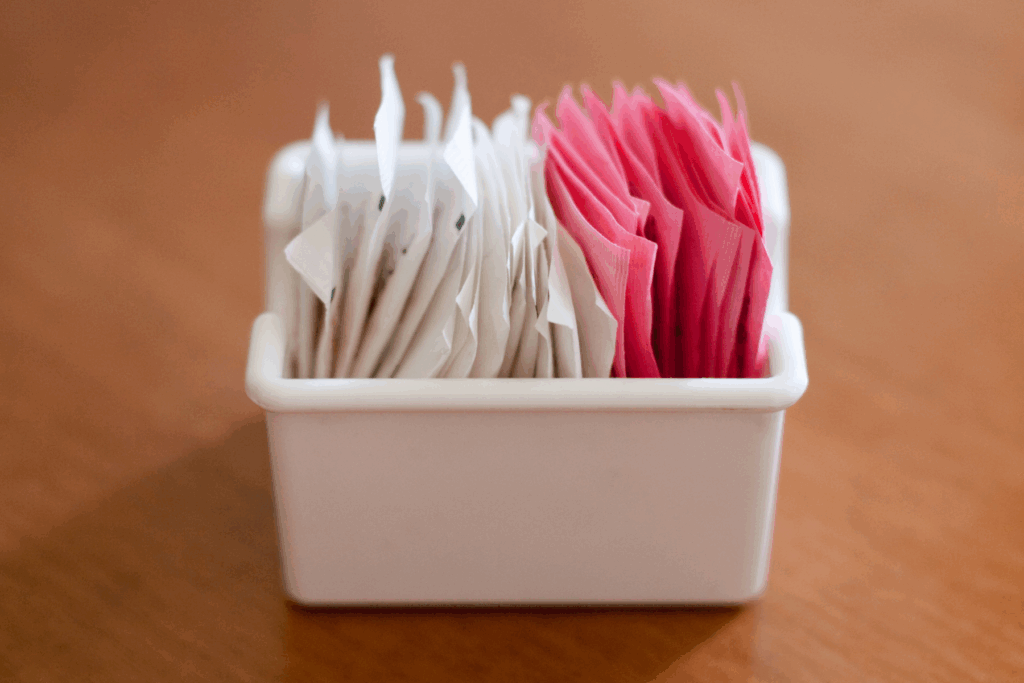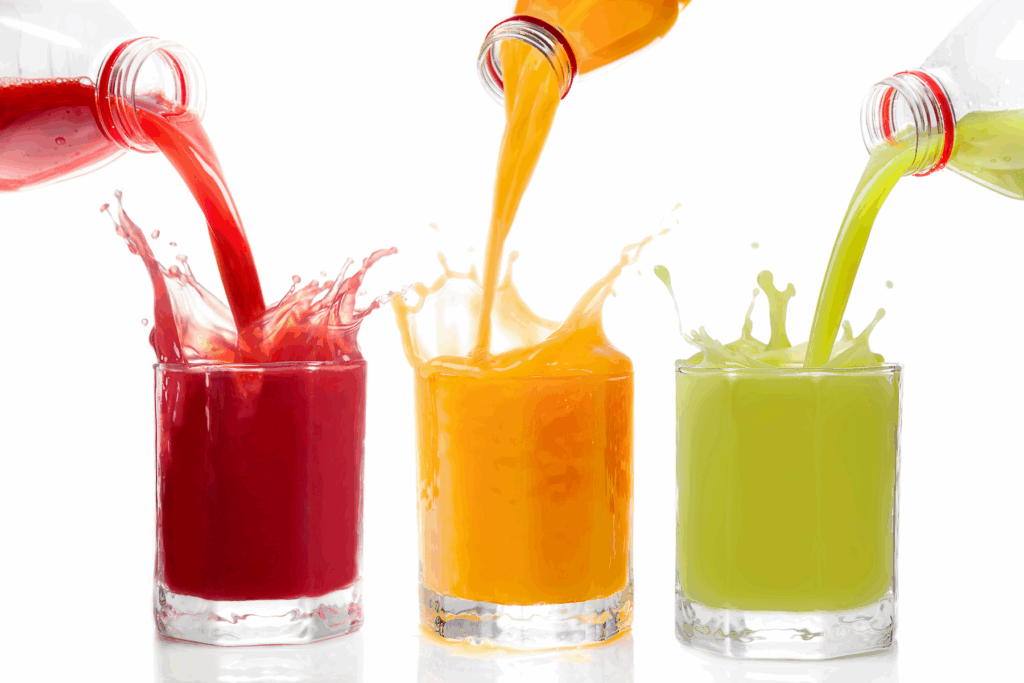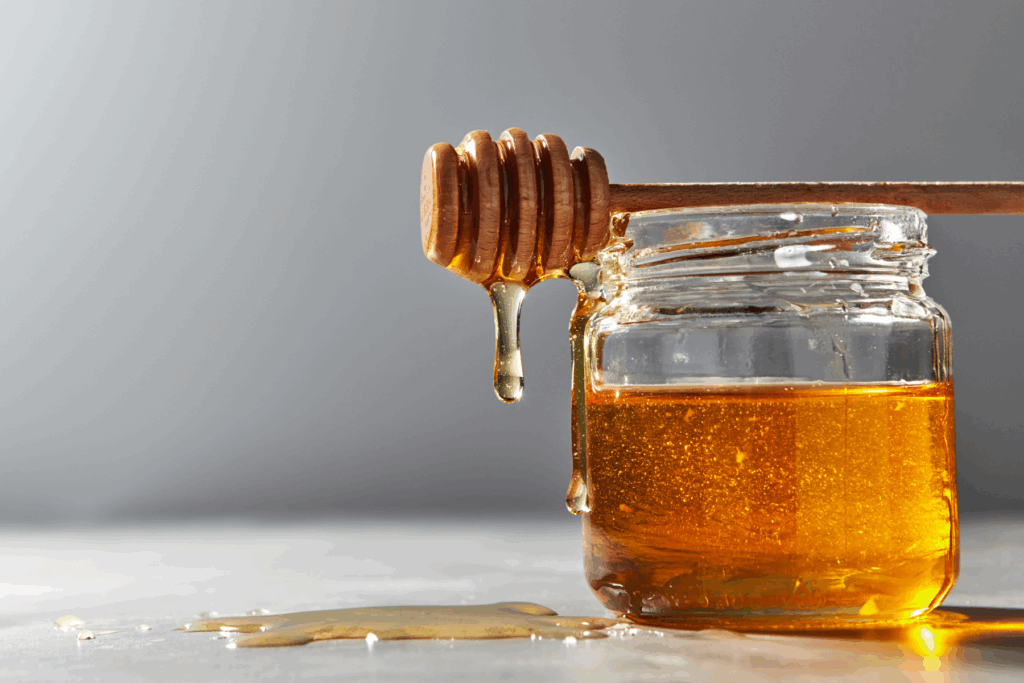


Foods to Avoid Giving Baby
So much thought is put into what to feed baby- how to start solids, the best foods for babies, the nutrients to include… but one question often gets overlooked. Have you ever asked, “Are there foods babies shouldn’t have?” While the list is not long, these foods are worth discussing to ensure your baby’s safety and optimal nutrition. Below are the top 9 foods to avoid giving babies.
1. Products Containing Artificial Sweeteners
Artificial sweeteners are 1000x sweeter than regular refined sugars, so when they are given to children frequently, they can increase the child’s preference for extremely sweet taste. Research shows “during the first years of life, the sweetness of sugars has a capacity to hinder or to help in laying a strong nutritional foundation for food preferences that often extend over a lifetime.” (1)
If your child is eating the occasional artificially sweetened food, you have nothing to worry about. However, the data remain unclear regarding the impact of artificial sweeteners during infancy and toddler years. “Artificial sweeteners are increasingly consumed by children and pregnant women around the world, yet their long-term health impact is unclear. Some studies show that they may adversely affect body composition and cardio-metabolic health.” (2)
To learn more about Added Sugar, Artificial Sweeteners, and Sugar Alcohols for Baby, check out this blog post.
2. Honey
The American Academy of Pediatrics (AAP) recommends that you do not give honey to a baby younger than 12 months. (3) This is due to the risk of botulism, which is a type of food poisoning that can produce toxins in a baby’s intestines that can make your baby very sick.
It is important to note that this includes foods made with honey, like Honey Nut Cheerios or Honey Graham Crackers.
In addition, honey is considered an added sugar, so avoiding it in the first year of life can help prevent tooth decay as well.
3. Choking Hazard Foods
Choking is a leading cause of death among children 3 years old and younger. Follow the guidelines below from the American Academy of Pediatrics (4):
- Cut foods such as grapes and other fruits, meat, cheese, and raw vegetables into small pieces and shapes that won’t block airways. Cut hot dogs lengthwise as well as widthwise.
- Cook vegetables so they become softer and easier to chew.
- Give only small amounts of peanut butter or other foods of similar consistency to prevent them from blocking the airway.
- Ensure children are not engaged in high-energy activities when they are eating. If they stumble or get scared, they may gasp and swallow large pieces of food.
- Be CPR and First Aid trained. Children can choke on foods and non-food items. Being prepared and educated on what to do if a child is choking is priceless information.
To read more about Choking Hazard Foods, take a look at my blog post here.
4. Cow’s Milk
The American Academy of Pediatrics (AAP) recommends that whole cow’s milk and low-iron formulas should not be used before the first year of life, because babies’ digestive systems under age 1 may not tolerate the cow’s milk protein in large quantities. (5)
Yogurt and cheese can be consumed before the age of 12 months, though. Yogurt and cheese are considered cultured dairy products, meaning the milk proteins are broken down into a more digestible form. This makes them okay for babies at around six months, as long as the baby does not have a cow’s milk protein allergy.
5. High Mercury Foods
Some lakes, rivers, oceans, and other bodies of water can be contaminated with mercury. Methylmercury can build up in fish, especially large fish that prey on smaller fish and tend to live longer, such as sharks and swordfish.
Eating too much of these contaminated fish can have harmful effects on a child’s developing nervous system. (6) Fish is recommended to be consumed 1-2 times per week, but choose fish that are low in mercury. Avoid fish that are high in mercury, such as:
- Tilefish
- Shark
- Swordfish
- King mackerel
- Orange roughy
- Marlin, bigeye & bluefin tuna
Try seafood from Safe Catch Seafood for their reduced mercury content, as well as choosing the “No Salt” canned fish versions to reduce the sodium content for children younger than 1.
For more information on the best and worst fish options for babies, check out this full blog post.
6. Fruit Juice
100% fruit juice should not be given before 12 months of age, and should be limited to 4 ounces per day after the age of 12 months.
We prefer offering your child whole fruit sources and relying on breast milk, formula, and water to make up the majority of their fluid intake for the first 12 months of life.
“Juice is lower in dietary fiber than whole fruit and can contribute to extra calories when consumed in excess.” (7) Juice with added sugar should be avoided completely.
More in-depth beverage guidelines can be found here.
7. Added Sugars
Added sugars can contribute to the development of health risks if consumed in excess, as well as displace more nutrient-rich foods in the diet. The Dietary Guidelines for Americans recommends avoiding added sugar before the age of two. (8)
A full blog post on this topic can be found here.
8. High Sodium Foods
Adding moderate amounts of salt to food for taste is acceptable, but excessive amounts of salt should be discouraged. Because a child’s taste preferences are formed early, large quantities of sodium may heighten the risk for health conditions like high blood pressure later in life. Another concern in children 6 months to 2 years is the maturity level of their kidneys and their ability to process large amounts of sodium.
The recommendation for sodium for children between the ages of 6-12 months is <400 mg/day, and this includes the sodium naturally occurring in breast milk or the sodium of formula.
For more tips on how to navigate sodium intake in babies, check out the full blog post.
9. Raw or Undercooked Foods
Undercooked meats, fish, poultry, and eggs can have bacteria that can cause foodborne illnesses. Children under the age of 5 are more susceptible to food poisoning because their immune systems are still developing and can’t fight off infection as well as adults. These foods should be cooked to the proper internal temperature to kill the germs that cause illness. Check out the safe minimum internal temperature chart from the USDA.
Now that we have covered the foods to avoid, if you would like more information on how to start solids and the best foods for babies, check out our Starting Solids Course and free Baby-led Weaning Pantry Staples guide.
References
- Murray RD. Savoring Sweet: Sugars in Infant and Toddler Feeding. Ann Nutr Metab. 2017;70 Suppl 3:38-46. doi: 10.1159/000479246. Epub 2017 Sep 14. PMID: 28903112.
- Archibald AJ, Dolinsky VW, Azad MB. Early-Life Exposure to Non-Nutritive Sweeteners and the Developmental Origins of Childhood Obesity: Global Evidence from Human and Rodent Studies. Nutrients. 2018 Feb 10;10(2):194. doi: 10.3390/nu10020194. PMID: 29439389; PMCID: PMC5852770.
- Botulism. (n.d.). HealthyChildren.org. https://www.healthychildren.org/English/health-issues/conditions/infections/Pages/Botulism.aspx
- American Academy of Pediatrics Releases New Policy Statement on Choking. (2024). Nationwidechildrens.org. https://www.nationwidechildrens.org/newsroom/news-releases/2010/02/american-academy-of-pediatrics-releases-new-policy-statement-on-choking
- Cow’s Milk Alternatives: Parent FAQs. (2019). HealthyChildren.org. https://www.healthychildren.org/English/healthy-living/nutrition/Pages/Milk-Allergy-Foods-and-Ingredients-to-Avoid.aspx
- World Health Organization. (2024, October 24). Mercury and Health. Who; World Health Organization: WHO. https://www.who.int/news-room/fact-sheets/detail/mercury-and-health
- Healthy Eating Research. (2019). https://healthyeatingresearch.org/wp-content/uploads/2019/09/HER-HealthyBeverage-ConsensusStatement.pdf
- USDA. (2020). Dietary guidelines for Americans 2020-2025. In Dietary Guidelines for Americans. USDA. https://www.dietaryguidelines.gov/sites/default/files/2021-03/Dietary_Guidelines_for_Americans-2020-2025.pdf
References
Want more? My course is a 100% evidence-based approach to starting solids in a way that encourages a healthy dietary pattern from the start.
Check out the Starting Solids 101 Course now!
Access Course Now

Cinthia Scott is a Registered Dietitian (RD) and International Board Certified Lactation Consultant (IBCLC) with over 10 years experience in the field of dietetics. Cinthia focuses on ensuring optimal nutrition in the first 1000 days of life to ensure optimal growth and development as well as set the stage for long-term health. Cindy is an author, starting solids expert, and advocate for caregivers receiving evidence based education and support surrounding breastfeeding and starting solids.
Cinthia is co-author of the 101beforeone Starting Solids Book, “101beforeone -baby-led feeding cookbook,” and is the founder and owner of The Baby Dietitian LLC which is her private practice built to provide virtual 1:1 services for caregivers surrounding infant nutrition, toddler nutrition, and breastfeeding support. Cinthia is also the creator of the Starting Solids 101 Program which provides caregivers 1:1 support from a Pediatric Dietitian on how to provide optimal nutrition from the start and create healthy eating habits that will last their whole lifetime. To work with Cinthia, you can access her services here.
Cinthia provides tons of free information for parents on her social media accounts as well.
- Instagram: @The.Baby.Dietitian
- Tiktok: @The.Baby.Dietitian
